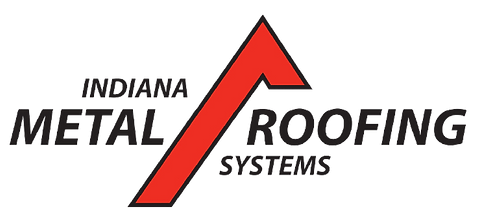Essential Home Inspections After a Hail Storm
- Joseph Justice
- Dec 23, 2024
- 4 min read
Hail storms can cause extensive damage to your home, leaving behind hidden issues that, if not addressed promptly, may lead to costly repairs. Conducting a thorough inspection after a storm is crucial to protect your property from long-term damage. Below are the key areas you should check after a hail storm to ensure your home remains safe and secure.
At Indiana Metal Roofing Systems, we emphasize proactive inspections to maintain the integrity of your roof and other critical areas of your home.

1. Inspect the Roof for Damage
Your roof is the first line of defense against the elements, and it often takes the brunt of a hail storm’s impact. Even small hailstones can cause significant damage to shingles, tiles, or other roofing materials, potentially leading to leaks or structural issues.
Signs of Roof Damage
Dented or Missing Shingles: Look for shingles that appear warped, bent, or completely missing.
Granule Loss: Check for granules from asphalt shingles collecting in gutters or around your home. Loss of granules exposes the underlying material to UV rays, weakening the shingles.
Cracked Tiles or Broken Flashing: If your roof is tiled, look for cracks or chips. Also, inspect metal flashing around chimneys and vents for signs of damage.
2. Check Siding and Exterior Walls
Hail doesn’t just damage the roof; your home’s siding and exterior walls are also vulnerable. Vinyl or aluminum siding can be especially susceptible to dents, cracks, or punctures caused by hail.
What to Look For:
Dents and Cracks: Pay close attention to areas where siding might be dented or cracked from the impact of hailstones.
Peeling Paint or Warping: Hail can cause the paint to chip or the siding to warp, reducing your home’s weather resistance.
Gaps Between Siding Panels: Check for spaces between the panels, as this can allow moisture to seep in and cause further damage.
Damaged siding can lead to water intrusion and affect the insulation of your home, so it’s critical to fix any issues as soon as possible.
3. Examine Windows and Doors
Windows and doors are another common area of concern after a hail storm. Even if the glass remains intact, hail can cause damage to the frames, seals, and overall structure, compromising your home’s energy efficiency and security.
Key Points to Inspect:
Cracked or Shattered Glass: Look for any cracks, chips, or shattered glass in windows and doors.
Dented Frames and Seals: Hail can dent metal frames or damage seals, allowing water and air to leak through.
Damaged Weatherstripping: Check the weatherstripping around windows and doors to ensure it hasn’t been torn or degraded by the storm.
If water is allowed to seep in through damaged windows or doors, it can lead to mold growth and structural damage within your home.
4. Inspect Gutters and Downspouts
Your home’s gutters and downspouts are essential for directing rainwater away from the foundation, but hail can easily dent or block these systems. If gutters are damaged, water can overflow and cause damage to your home’s foundation and landscaping.
What to Check:
Dented or Loose Gutters: Look for any dents, bends, or loose sections of your gutter system.
Clogged Downspouts: Ensure that downspouts are free from debris and properly attached to direct water away from your home.
Water Pooling: If water is pooling near the foundation, this could indicate that your gutters are not functioning correctly and need repair.
Conclusion: Protecting Your Home from Hail Damage
Inspecting your home after a hail storm is essential to avoid long-term damage. By checking your roof, siding, windows, doors, and gutters, you can catch potential issues before they worsen. Prompt repairs not only protect your property but also maintain its value and prevent costly future damage.
At Indiana Metal Roofing Systems, we offer free inspections and estimates to help you assess the extent of storm damage and plan for repairs. With our professional roofing services, you can rest assured that your home will be protected from the elements.
FAQs
1. How soon after a hail storm should I inspect my home?It’s best to inspect your home as soon as possible after a hail storm. The sooner you catch potential damage, the sooner you can address it before it worsens.
2. Can hail damage affect my home’s energy efficiency?Yes, damaged windows, doors, and siding can allow air and moisture to seep into your home, reducing its energy efficiency and increasing your heating or cooling bills.
3. What should I do if I find damage?If you find damage, it’s important to contact a professional contractor for a full inspection and repairs. Ignoring hail damage can lead to more significant issues in the future.
4. Is hail damage covered by insurance?In most cases, hail damage is covered by homeowners insurance, but coverage can vary. Check with your insurance provider for details on your policy.
5. What if I can’t see any obvious damage?Even if there are no visible signs of damage, it’s still a good idea to have a professional inspection. Some types of hail damage, especially to the roof, may not be immediately noticeable but can cause problems later on.
For more information on the benefits of metal roofing, check out our article on 6 Signs It's Time to Replace Your Home's Damaged Shingles.


Comments